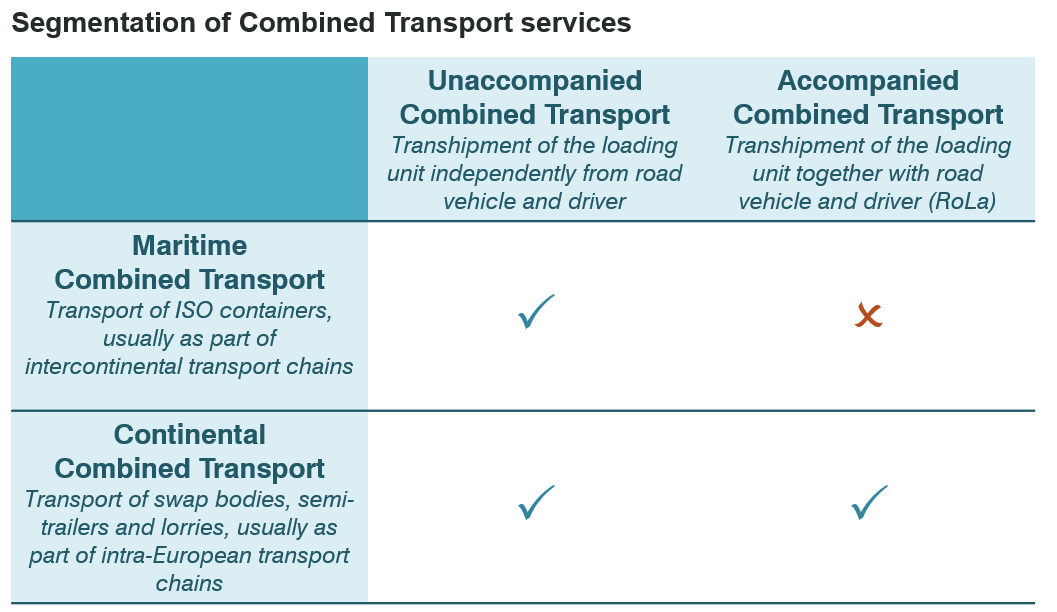For the general understanding of Combined Transport, several distinctions can be made.
1.Unaccompanied or accompanied Combined Transport
- unaccompanied when the loading units (swap bodies, containers and semi-trailers) travel alone
- accompanied (Rolling Road) when the whole lorry is forwarded with its driver
2. Vertical transshipment or horizontal transshipment
- Vertical transshipment is when a top loaded stackable (container) loading unit is lifted by crane, or when a non-stackable swap-body or craneable semi-trailer is lifted using specialised grapple arms attached to the spreader of cranes or reachstackers. The loading unit is transshipped by lifting and transferring.
- Horizontal transshipment is used in accompanied Combined Transport, when the full truck drives onto the RoLa wagon, or in the unaccompanied Combined Transport of semi-trailers when terminal tractors position the trailer onto a dedicated wagon that can receive the trailer without being lifted either through a loading tray or using a fold-out feature.
3. Shuttle trains or company trains
- Shuttle trains are open access services offered by a professional CTO, where theoretically every slot of the train may be occupied by a loading unit delivered by a different shipper. The booking of these trains are made slot-by-slot or by group reservations according to contracts with shippers.
- Company trains are intermodal trains where the entire train is filled by a single shipper (=”company”) while the organisation of the service is typically carried out by the CTO. The commercial risk for the filling of company trains rests with the shipper who ordered the train.
4. Port hinterland or continental or mixed traffic
- Port hinterland traffic implies mostly goods that are packed into ISO containers, which arrive in or leave Europe by sea typically from or to other continents. These top-loaded containers can be most effectively loaded to intermodal flat-wagons by automated cranes.
- Continental traffic takes place between an origin and destination both lying in Europe. A wide array of intermodal loading units are used for this type of traffic from semi-trailers through all types of swap-bodies to pallet-wide high cube containers. Loading can be horizontal or vertical requiring more diverse rail-wagons.
- Mixed traffic means a train which carries both port hinterland and continental units.
Combined Transport is an efficient alternative to long-distance unimodal road transport insofar as it offers several advantages detailed under the “Benefits” section. CTOs continuously innovate their production models and employ different transshipment techniques to enable the better exploitation of these advantages.


